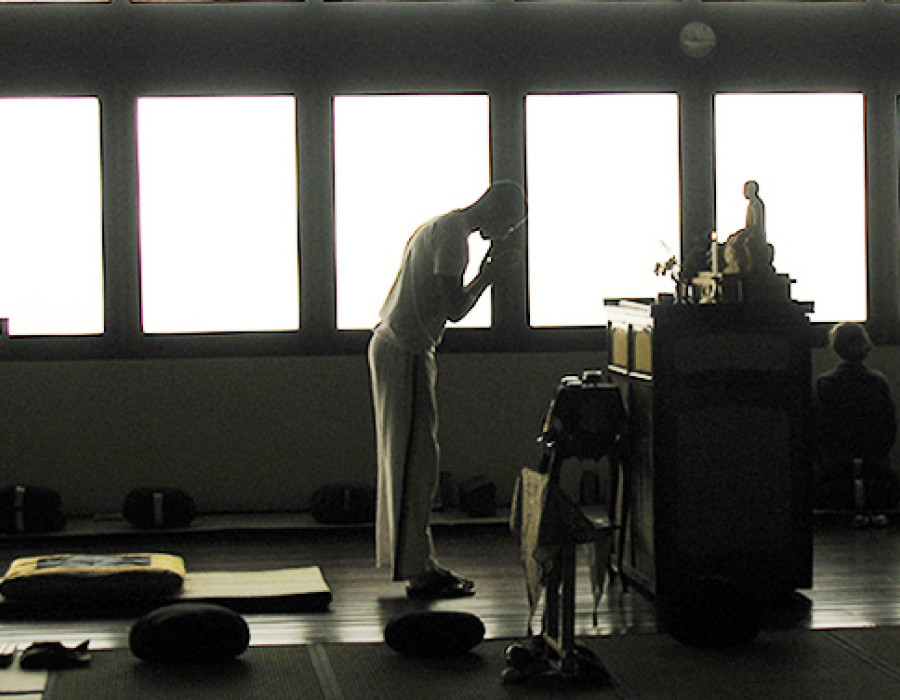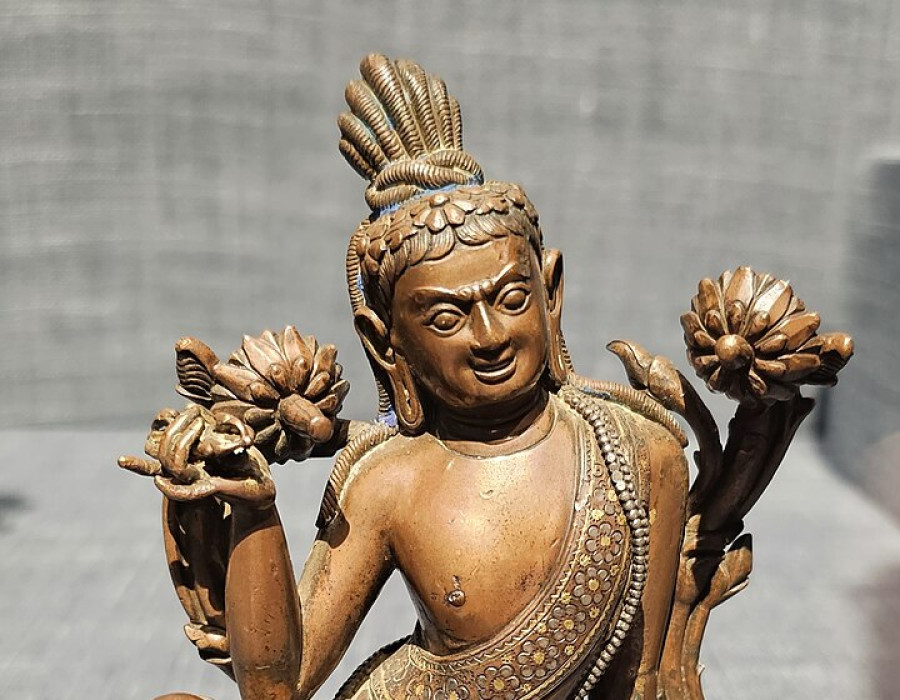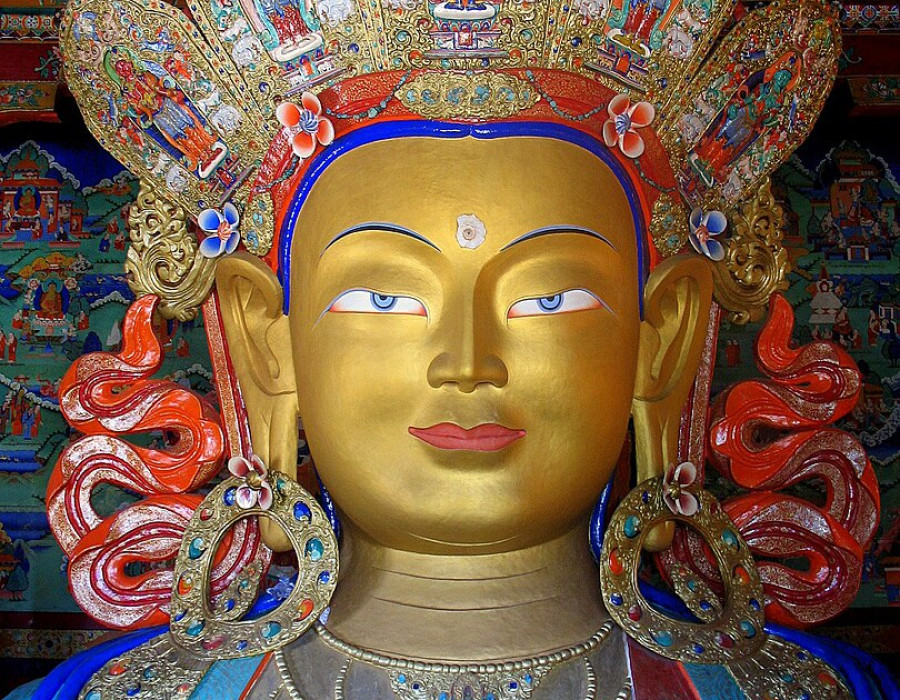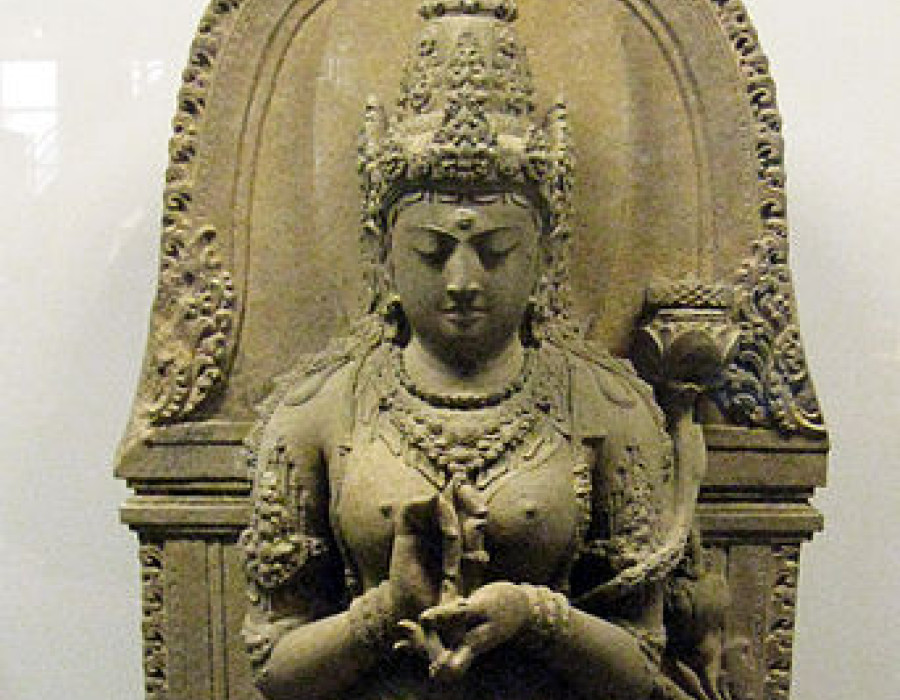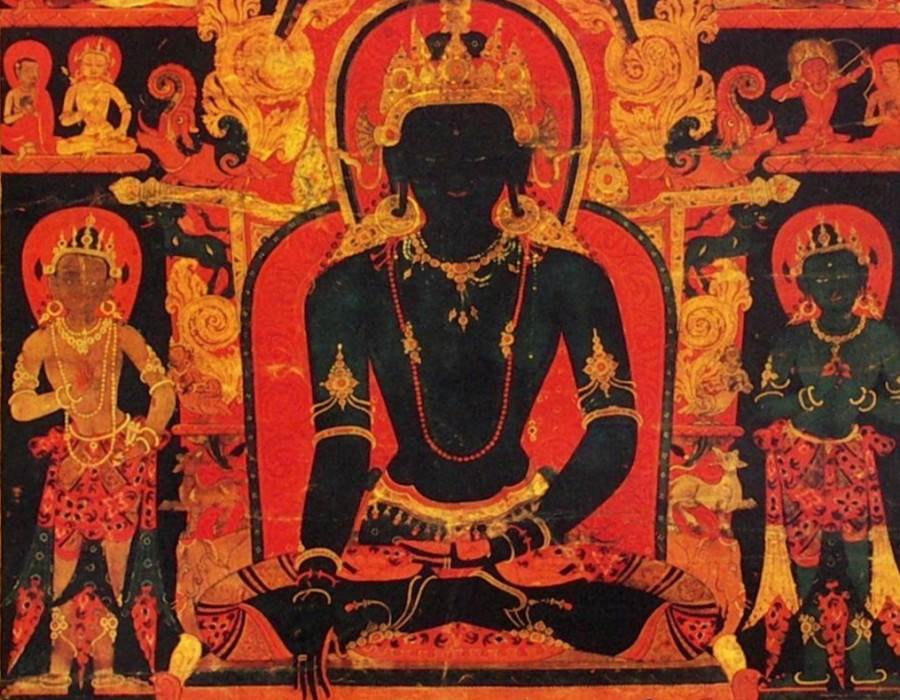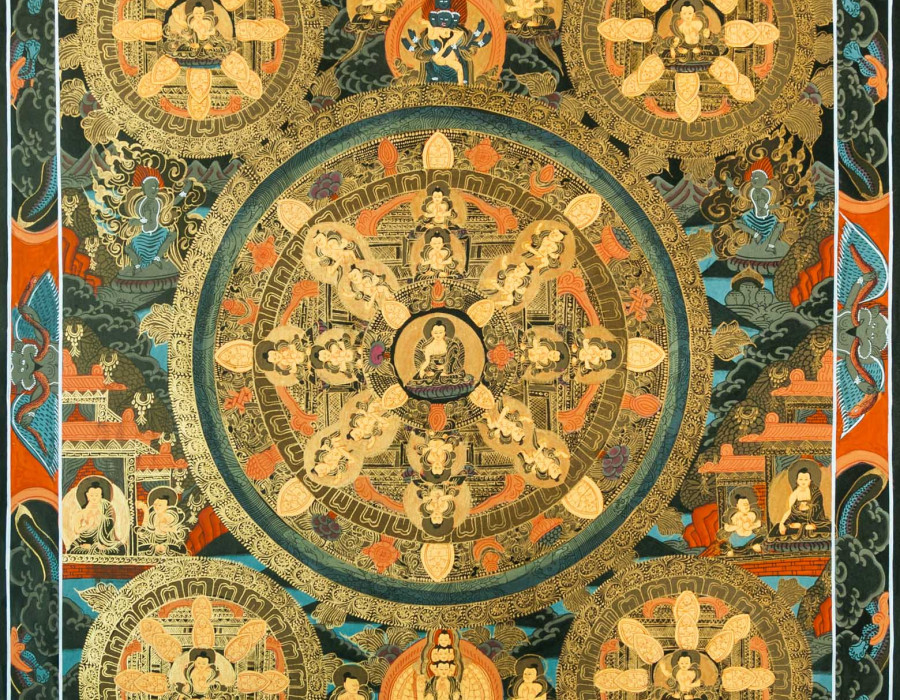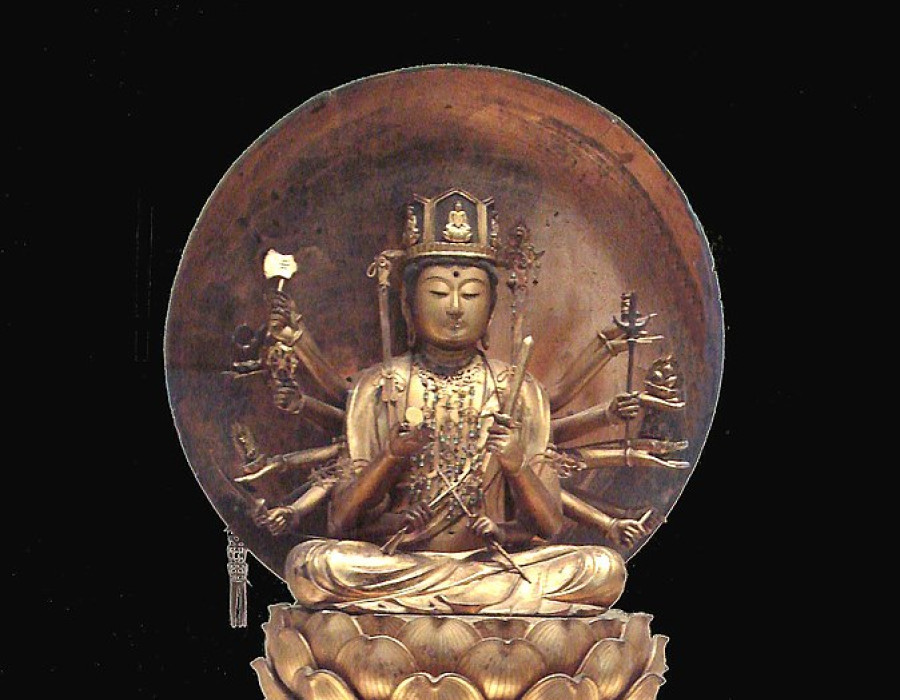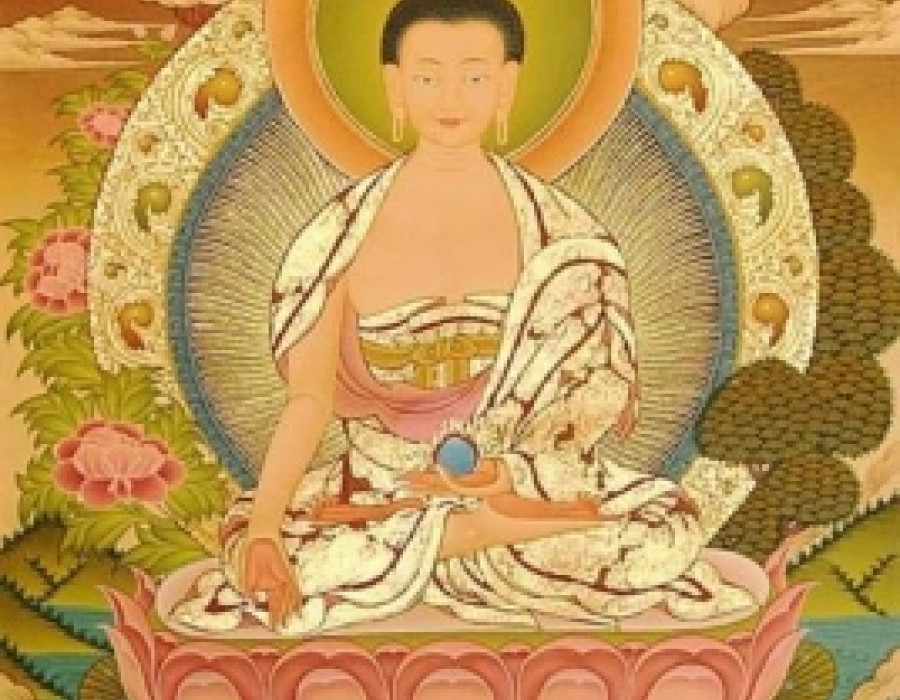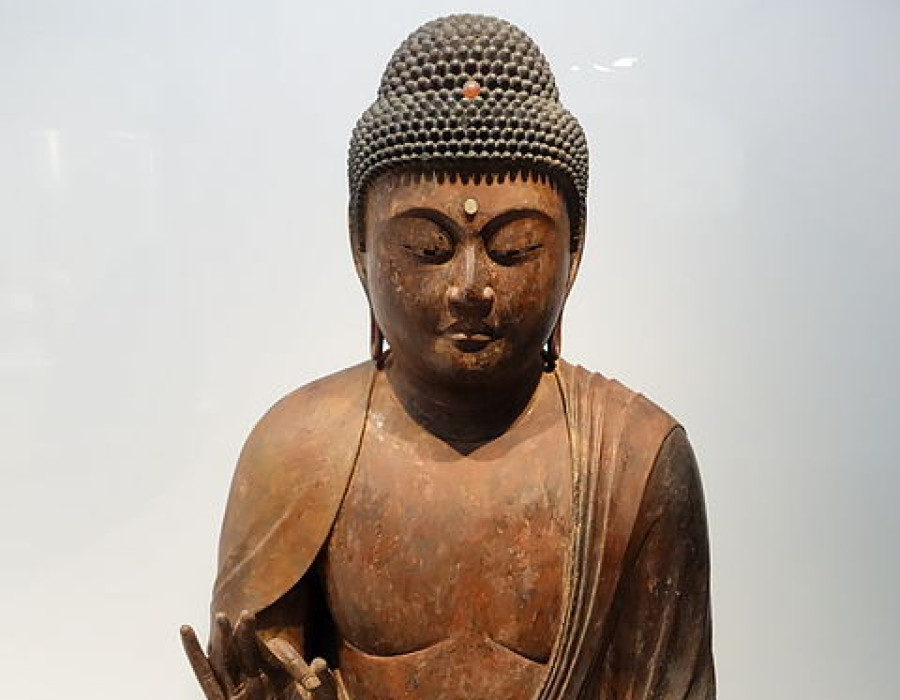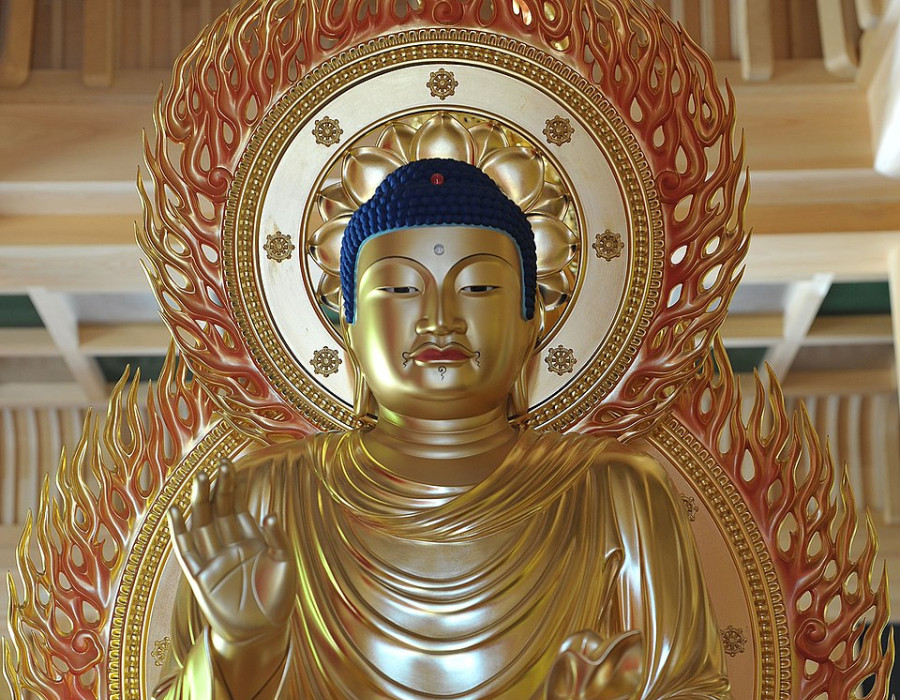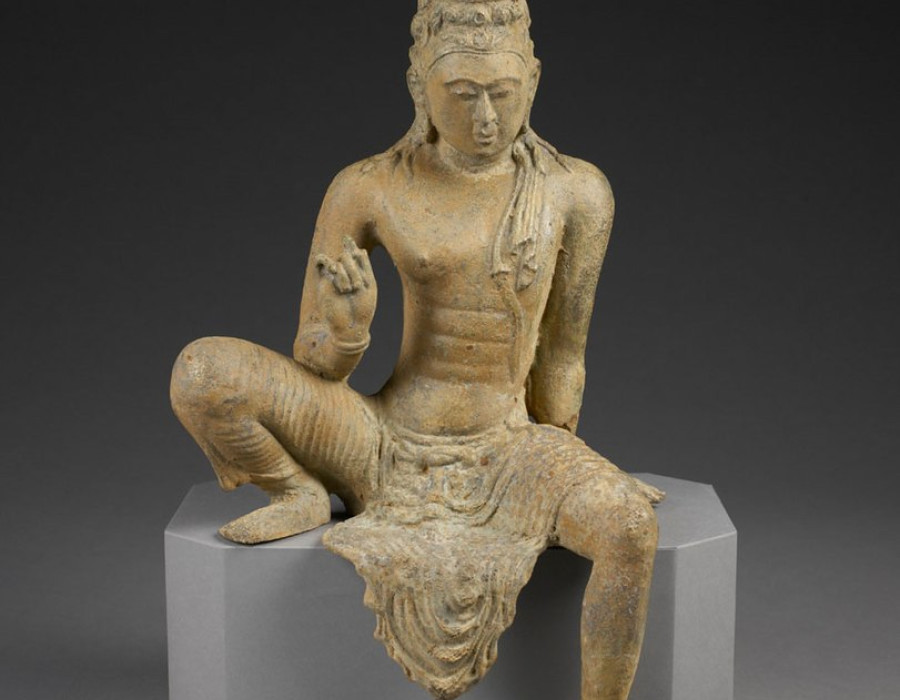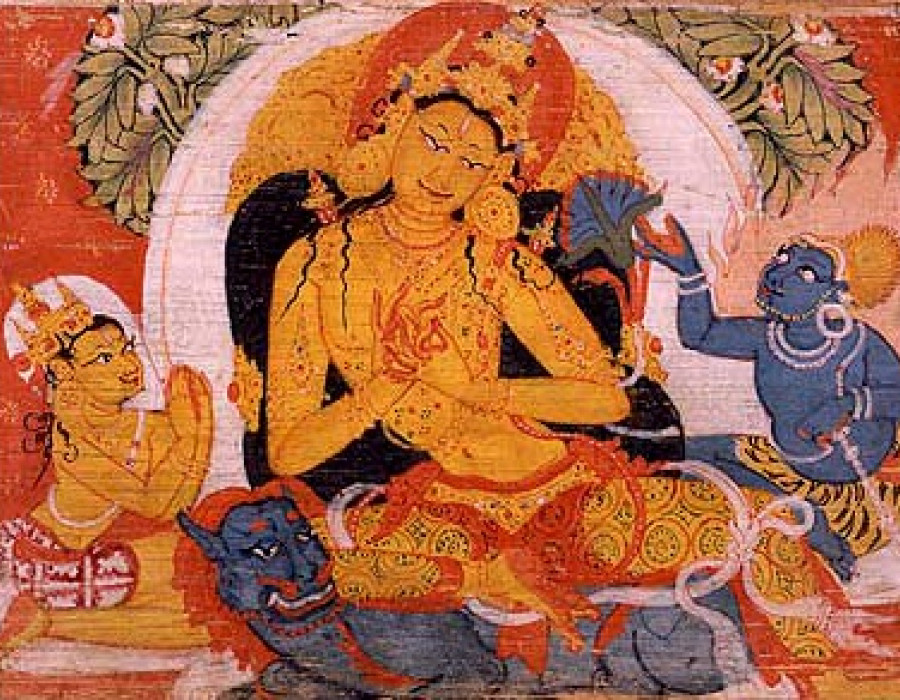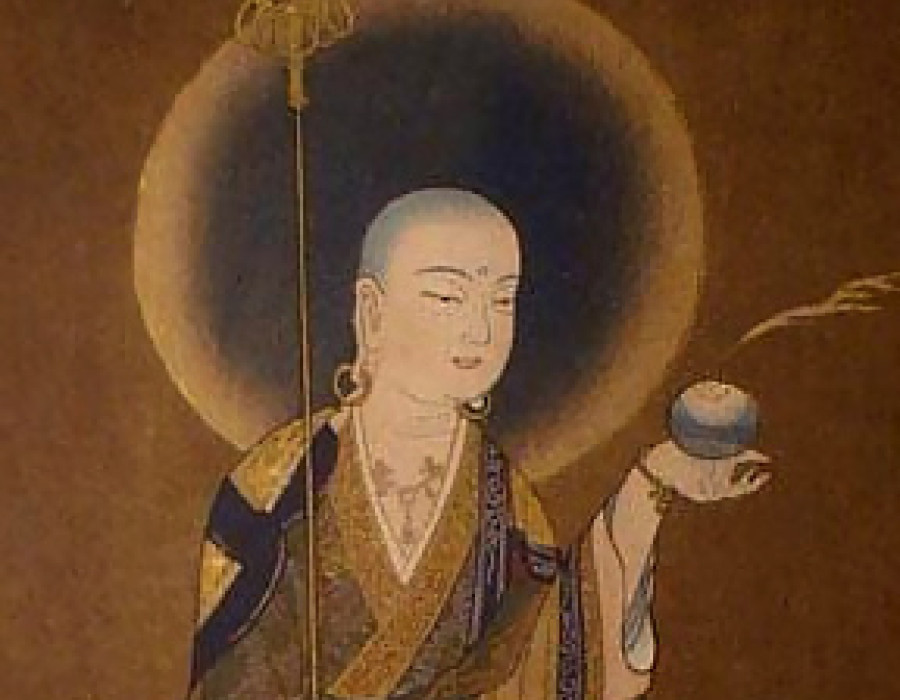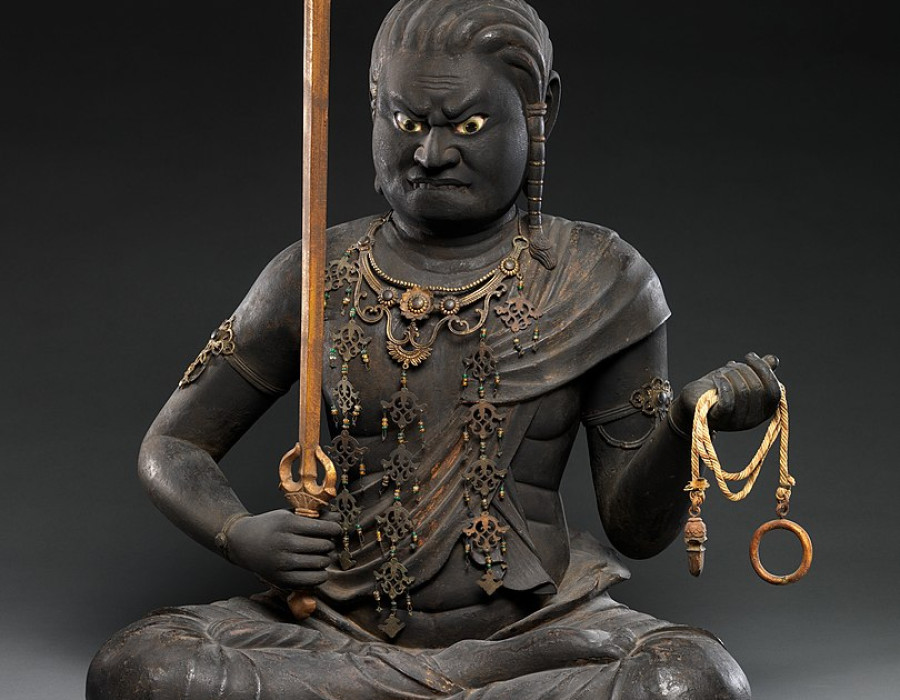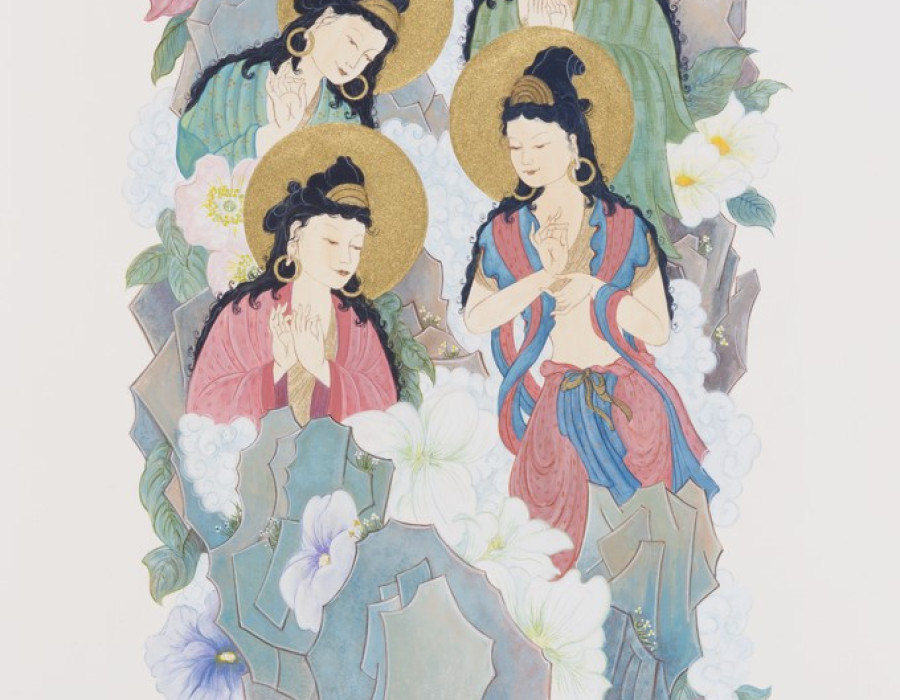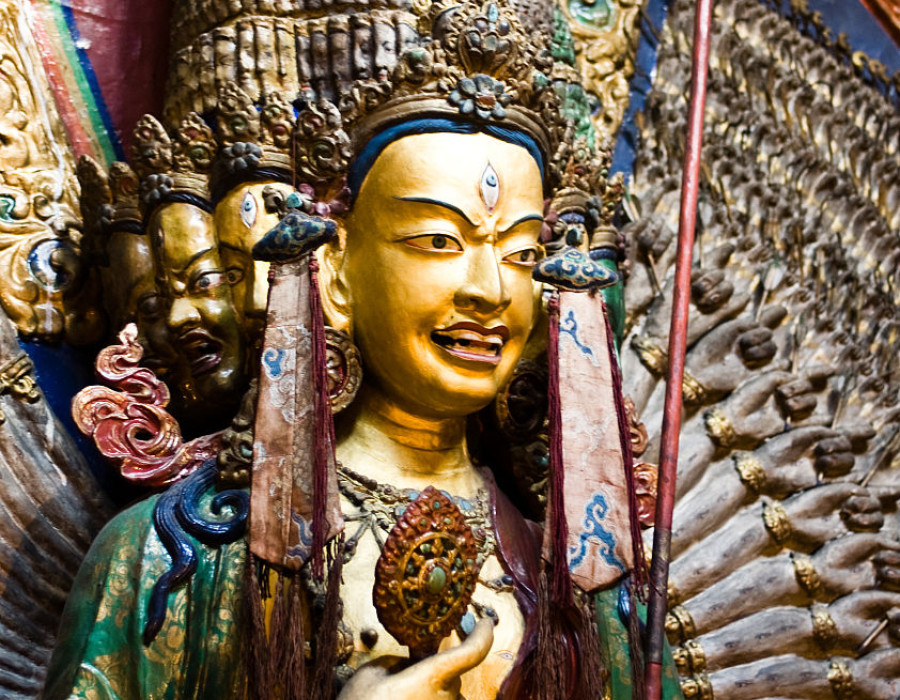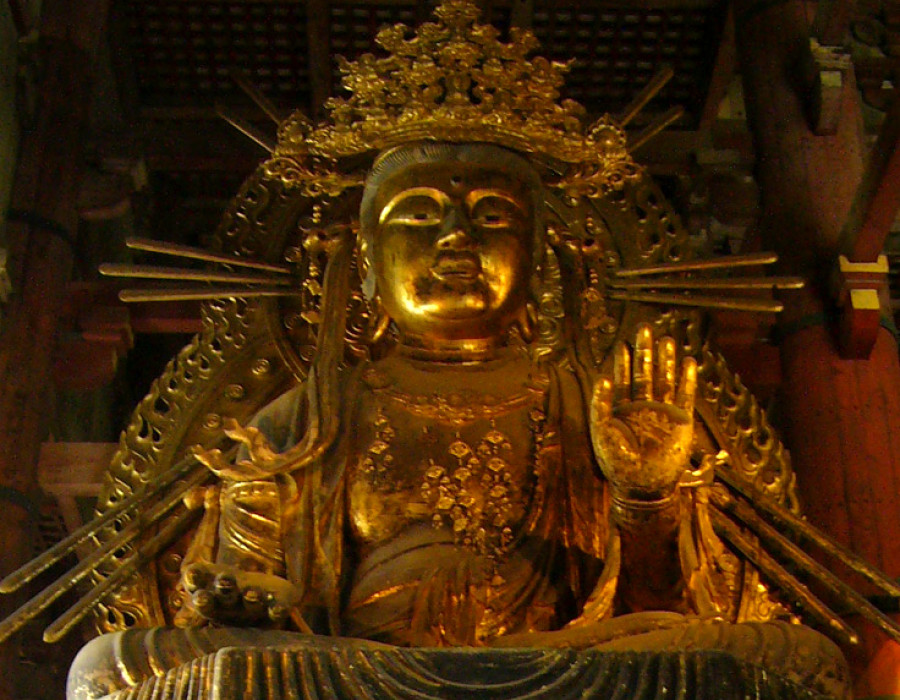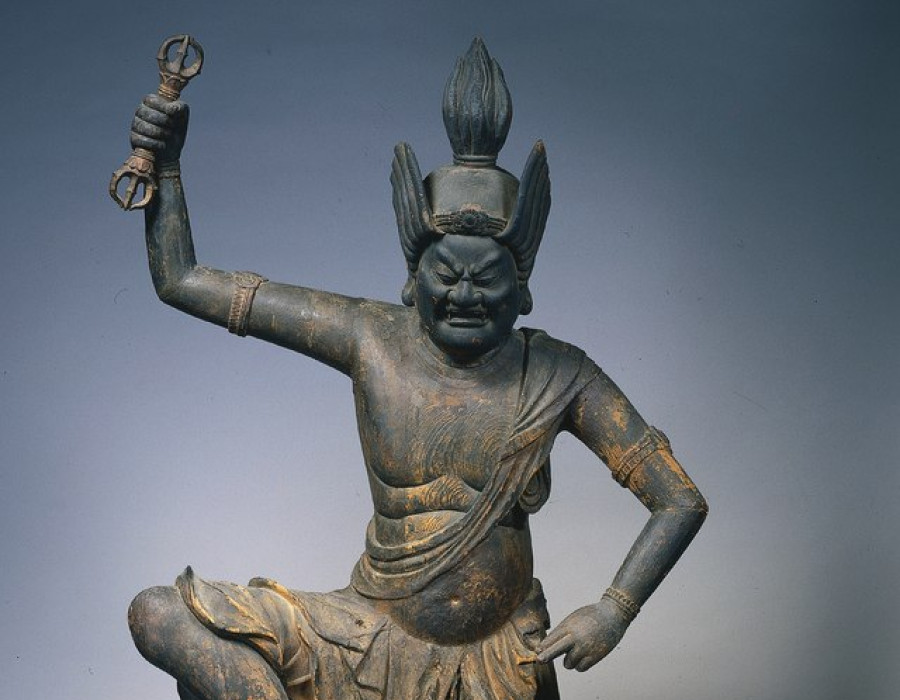
Martin Goodson
Zaō Gongen
The Way of Devotion
This Japanese deity who converted to Buddhism can scare away evil thoughts and negative emotions.
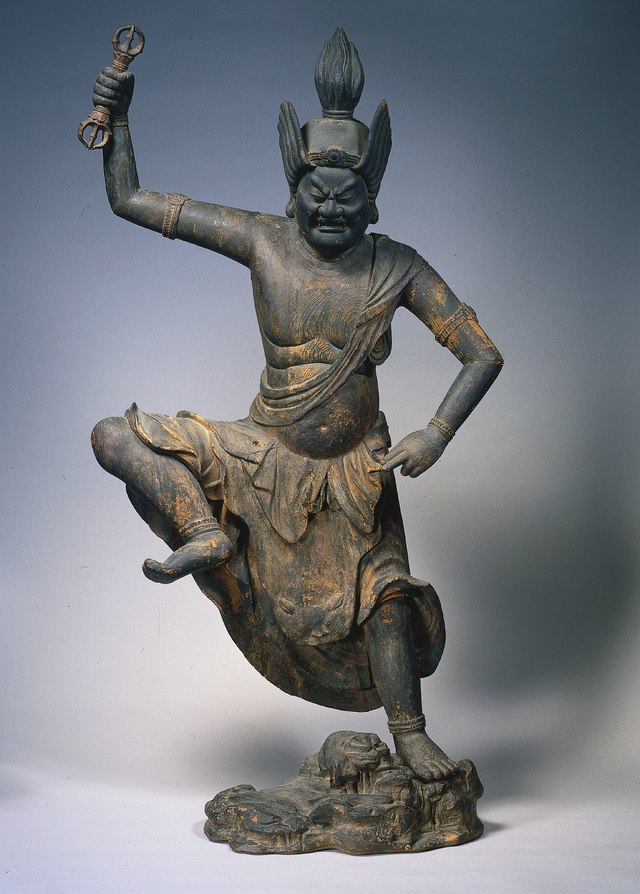
Japan, Kamakura period , Zao Gongen, Cleveland Museum of Art.
As Buddhism traveled through many countries, it came into contact with various deities and spirits of the localities.
In Japan, in the 6th century, when Buddhism first arrived, it found a land populated by the kami - deities of the indigenous people. At the time of Buddhism’s arrival, there was no name for the collection of spiritual practices of this shamanistic religion which in time would be called Shinto to differentiate it from Buddhism. The kami were deities tied to places such as mountains, waterfalls, and other sites. These spirits had governance over such things as rainfall, fertility and the seasons, and having power over the welfare of the inhabitants meant that they were not to be ignored. Interaction with them was by ceremonies and festivals, the making of offerings, pilgrimage and also, more directly, via the yamabushi or spirit mediums who allowed people to consult directly with the kami when they possessed the yamabushi.
Zaō Gongen was originally one such kami, a mountain king who was the protector of Mt. Kinpu in the Japanese Alps in the south. By the 7th century, he had already been converted to Buddhism and took on the mantle of being associated with the Buddhas of the three periods of time:
Shakyamuni who represented the past.
Kannon, the Japanese equivalent of the Buddha’s compassion, Avalokiteśvara, who operates in the present.
Miroku Buddha, the Buddha of the Tushita heaven wherein resides the future Buddha. Thus he represented the future.
These three faces of time act as a reminder of the teaching of anicca - that all things are subject to change and that we live in a dynamic world. Perhaps this is why Zaō is pictured with a fierce face holding a thunderbolt in one hand and with his right leg raised as if he is about to leap out at us.
This dynamism and ferociousness associates him with the Myo-o, or wrathful deities, who all have some kind of protective role towards the Dharma. His association with the mountain makes him ideal to be protector of the yamabushi and of Shugendō, Japan’s syncretic religion which they follow. Their training involves hardships such as standing under waterfalls for long periods of time and a great deal of physical exertion up and down the mountain.
In Esoteric Buddhism, Zaō banishes evil thoughts and wrong views which obstruct enlightenment: his terrifying appearance with hair standing on end and wrapped in a blanket of flame would be enough to scare any thoughts away!
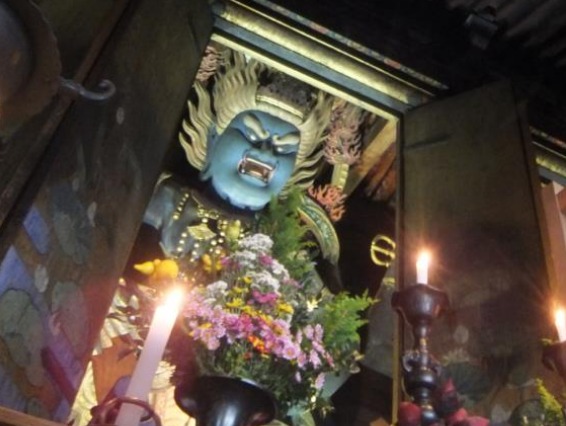 ©
©

